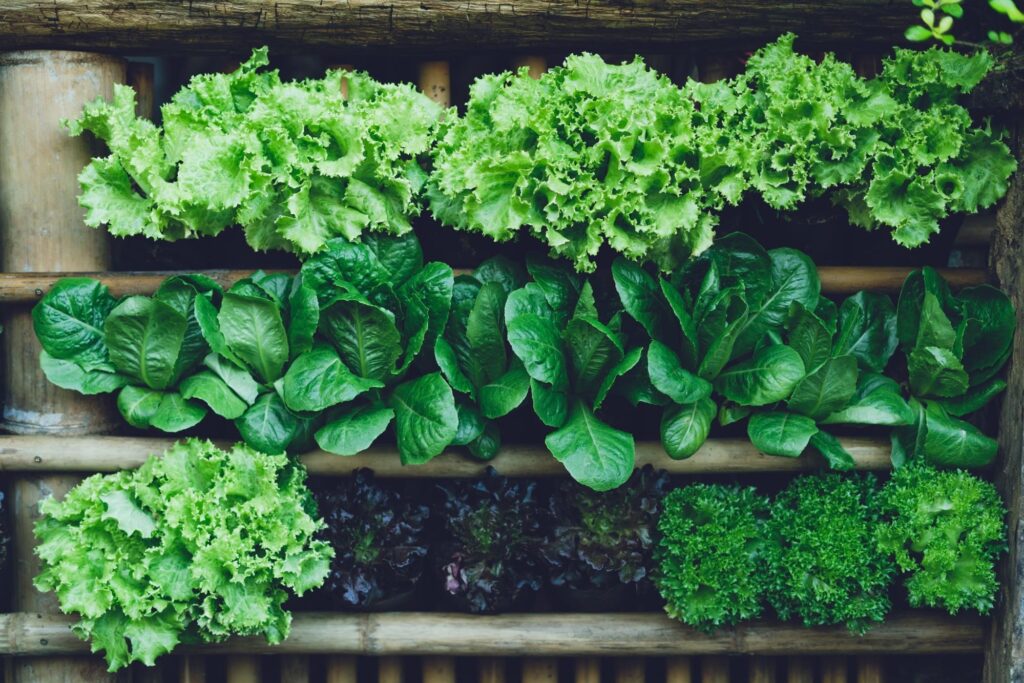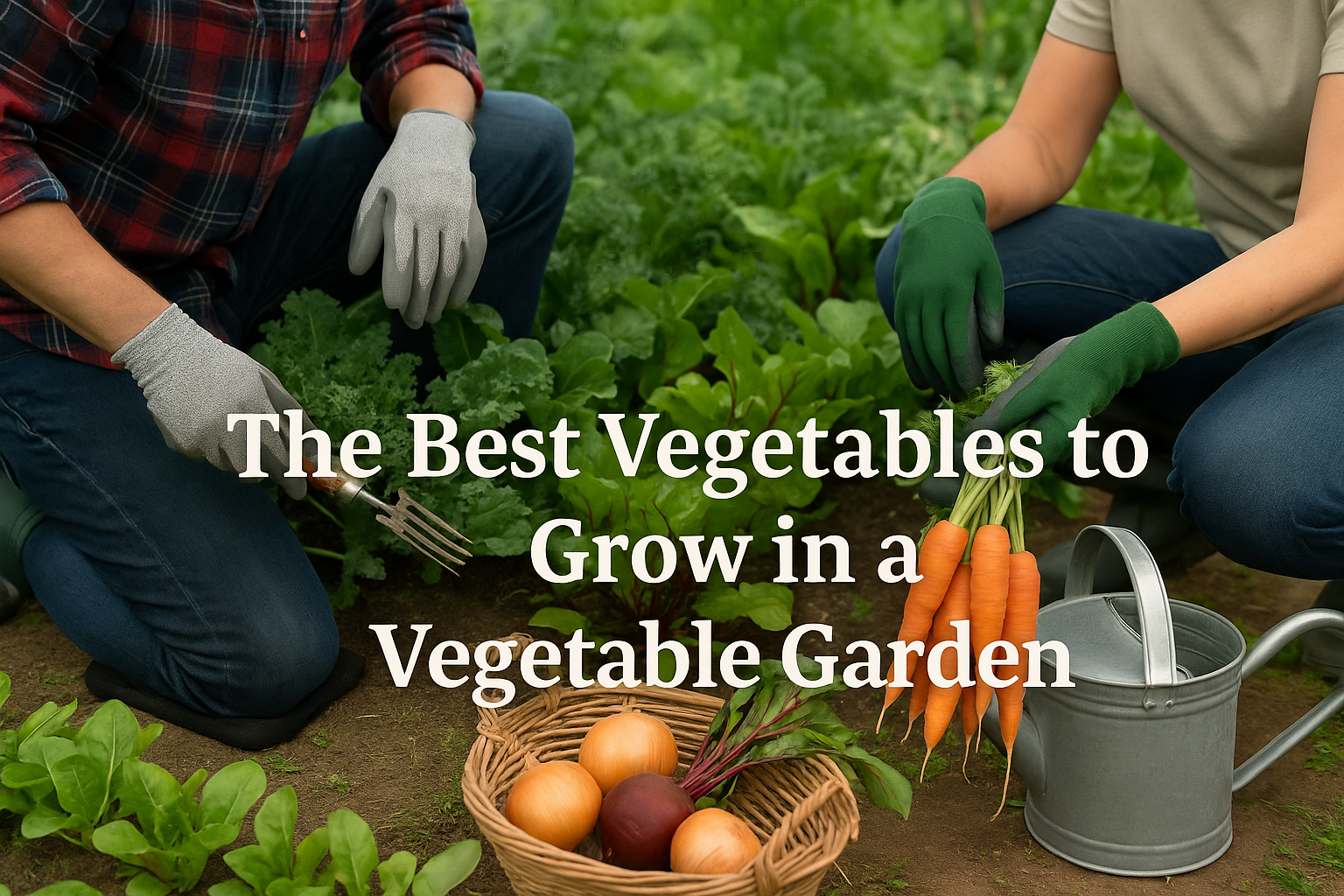Growing your own vegetables is one of the most satisfying, healthy, and sustainable hobbies you can adopt. Whether you have a large backyard, a raised bed, or just a few containers on a balcony, vegetable gardening offers the joy of fresh produce and the pride of self-sufficiency.
But with so many vegetables to choose from, where do you begin?
This guide highlights the best vegetables to grow in your vegetable garden—based on ease of growth, yield, versatility, and climate adaptability. Whether you’re a beginner or seasoned gardener, you’ll find a veggie (or ten!) to fall in love with.
Why Grow Your Own Vegetables?
Before diving into the top picks, let’s understand why home gardening is worth the effort:
- Health Benefits: Fresh vegetables retain more nutrients than store-bought ones. You also avoid pesticides and chemicals.
- Cost Savings: Once established, gardens can save money over time, especially with high-yield crops.
- Environmental Impact: Reduce your carbon footprint by minimizing the distance food travels.
- Satisfaction: There’s nothing quite like harvesting your dinner from your own soil.
- Stress Relief: Gardening is therapeutic and promotes mindfulness.
Now, let’s explore the best vegetables you can grow for maximum satisfaction and success.
1. Tomatoes
- Ideal For: Sunny spots and raised beds or containers
- Why Grow: Tomatoes are one of the most rewarding plants to grow. They thrive in warm weather and produce abundantly.
- Best Varieties: Cherry tomatoes (like ‘Sweet 100’), Roma, and heirloom types
- Pro Tips:
- Provide a cage or trellis for support.
- Water consistently to avoid splitting.
- Pinch off suckers for better yield.
2. Lettuce and Leafy Greens
- Ideal For: Partial shade to full sun, cool seasons
- Why Grow: Fast-growing and perfect for cut-and-come-again harvesting.
- Best Varieties: Butterhead, Romaine, Red Leaf, Spinach, Kale, Swiss Chard
- Pro Tips:
- Sow seeds every 2–3 weeks for a continuous harvest.
- Watch for pests like slugs and aphids.
- Harvest in the morning for the crispest leaves.
3. Carrots
- Ideal For: Deep, loose soil without rocks
- Why Grow: Sweet, crunchy, and perfect for snacking or cooking.
- Best Varieties: Nantes, Danvers, Little Finger (great for containers)
- Pro Tips:
- Thin seedlings to avoid overcrowding.
- Keep soil moist for even growth.
- Harvest before they become too woody.
4. Zucchini and Summer Squash
- Ideal For: Warm weather, lots of space
- Why Grow: Incredibly productive; even one plant can feed a family.
- Best Varieties: Black Beauty, Golden Zucchini, Costata Romanesco
- Pro Tips:
- Pick young for the best flavor.
- Watch out for powdery mildew.
- Give plenty of space to grow.
5. Green Beans
- Ideal For: Trellised vertical gardens or compact bush spaces
- Why Grow: High-yielding and relatively pest-free.
- Best Varieties: Blue Lake (bush), Kentucky Wonder (pole)
- Pro Tips:
- Harvest regularly to keep plants producing.
- Mulch to retain moisture.
- Avoid overwatering to prevent root rot.
6. Peppers (Bell and Hot)
- Ideal For: Full sun, containers or raised beds
- Why Grow: A wide variety of flavors, colors, and heat levels.
- Best Varieties: California Wonder (bell), Jalapeño, Habanero, Banana Pepper
- Pro Tips:
- Start seeds indoors if you’re in a cooler climate.
- Don’t over-fertilize or you’ll get leaves but no fruit.
- Stake taller plants to support heavy fruit.
7. Cucumbers
- Ideal For: Trellised beds or container gardens
- Why Grow: Crisp and refreshing; perfect for salads and pickling.
- Best Varieties: Straight Eight, Lemon Cucumber, Boston Pickling
- Pro Tips:
- Use trellises to save space and improve airflow.
- Keep soil evenly moist.
- Harvest often to prevent over-ripening.
8. Radishes
- Ideal For: Small spaces and quick results
- Why Grow: One of the fastest-growing vegetables—harvest in 3–4 weeks!
- Best Varieties: Cherry Belle, French Breakfast, Daikon
- Pro Tips:
- Great for kids or first-time gardeners.
- Sow every couple of weeks for a constant supply.
- Best grown in cooler weather.
9. Onions and Garlic
- Ideal For: Long-season planning and cooler climates
- Why Grow: Essential cooking staples with long shelf life.
- Best Varieties: Yellow Onion, Red Onion, Elephant Garlic, Softneck Garlic
- Pro Tips:
- Use sets for easier planting.
- Ensure good drainage.
- Let tops dry before harvesting for storage.
10. Herbs (Basil, Parsley, Cilantro, Mint)
- Ideal For: Containers or tucked into garden corners
- Why Grow: Flavor boosters that are expensive in stores but cheap and easy to grow.
- Best Varieties:
- Basil for Italian dishes
- Cilantro for Mexican/Asian cuisine
- Parsley as a garnish or ingredient
- Mint for tea and desserts
- Pro Tips:
- Harvest frequently to encourage growth.
- Mint is invasive—grow in pots!
- Flowering reduces leaf flavor, so pinch blooms off.
11. Potatoes
- Ideal For: Large beds, grow bags, or containers
- Why Grow: Hearty, nutritious, and fun to dig up like buried treasure.
- Best Varieties: Yukon Gold, Red Pontiac, Russet
- Pro Tips:
- “Hill” soil around stems to encourage more tubers.
- Use seed potatoes, not grocery ones.
- Cure before storage for better longevity.
12. Beets
- Ideal For: Cooler climates, full sun to partial shade
- Why Grow: Both roots and greens are edible and nutritious.
- Best Varieties: Detroit Dark Red, Chioggia, Golden Beets
- Pro Tips:
- Thin seedlings to allow root development.
- Mulch to retain moisture.
- Harvest small for tender beets.
Bonus: Kid-Friendly Veggies to Grow

If you’re gardening with kids, try fast-growing and low-maintenance crops:
- Snap peas
- Cherry tomatoes
- Radishes
- Bush beans
- Baby carrots
They’ll love watching the plants grow and tasting the results of their efforts.
Final Tips for a Successful Vegetable Garden
Here are some foundational tips that apply to nearly every crop:
1. Know Your Zone
Check your USDA Hardiness Zone (or local equivalent) to choose varieties that suit your climate.
2. Start Small
Don’t plant more than you can manage. Start with 4–6 veggies and expand as you gain confidence.
3. Plan for Sunlight
Most vegetables need at least 6 hours of sunlight daily. Leafy greens can tolerate some shade.
4. Soil is Everything
Use compost-rich, well-drained soil. Test your soil and amend it with organic matter as needed.
5. Water Smart
Water deeply and consistently—preferably early in the day. Avoid overhead watering to reduce disease.
6. Practice Companion Planting
Some plants help others thrive. For example, plant basil near tomatoes to enhance flavor and deter pests.
7. Rotate Crops
Don’t plant the same veggie in the same spot every year. Crop rotation prevents soil depletion and reduces disease.
Conclusion
The best vegetables to grow in your garden are the ones you’ll enjoy eating, have the right climate for, and can commit to maintaining. From tomatoes and peppers to lettuce and carrots, there’s a whole world of delicious produce you can grow at home.
Start small, stay consistent, and don’t be afraid to get your hands dirty—because the real joy of gardening comes not just from the harvest but from the journey.

